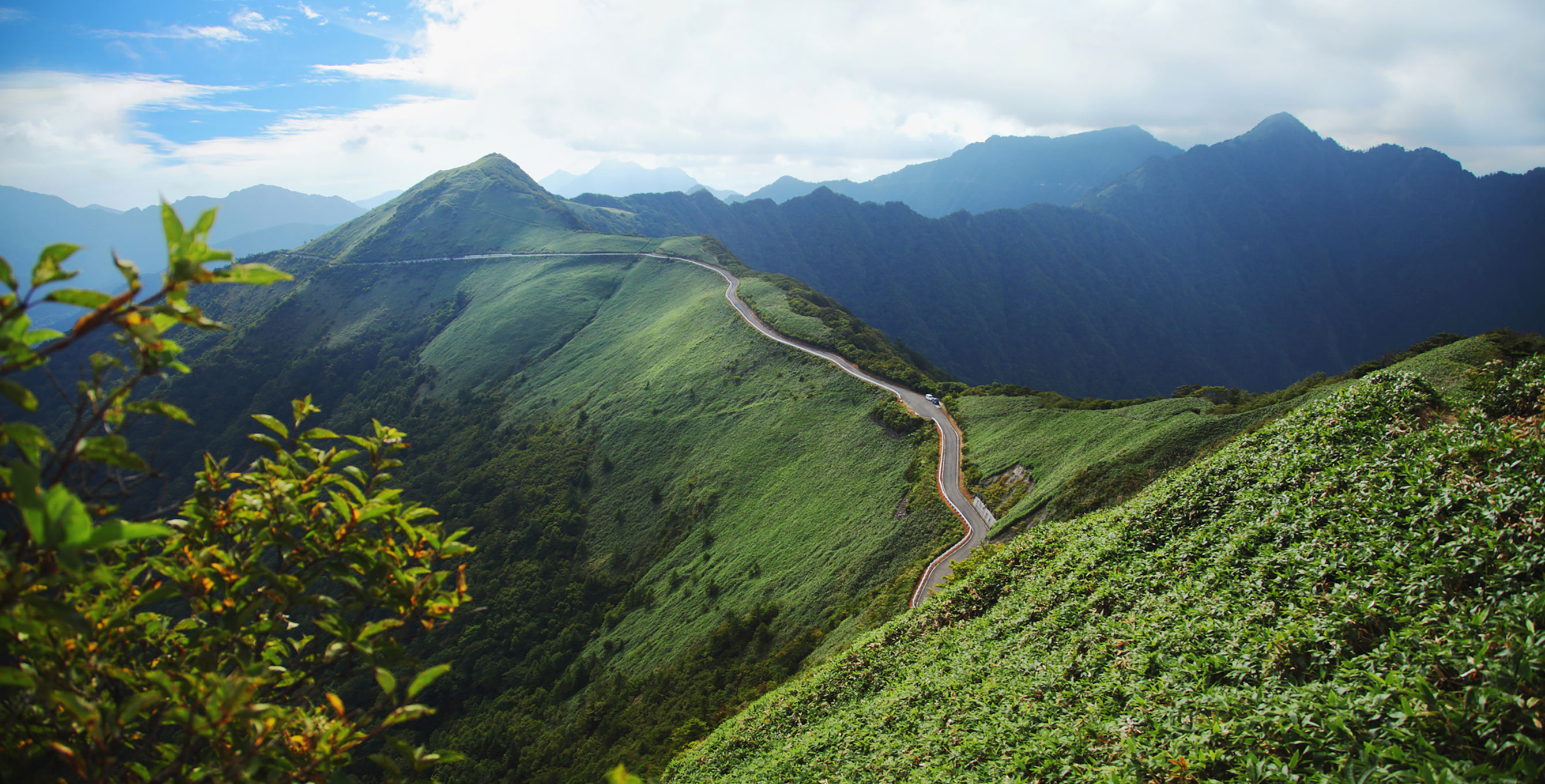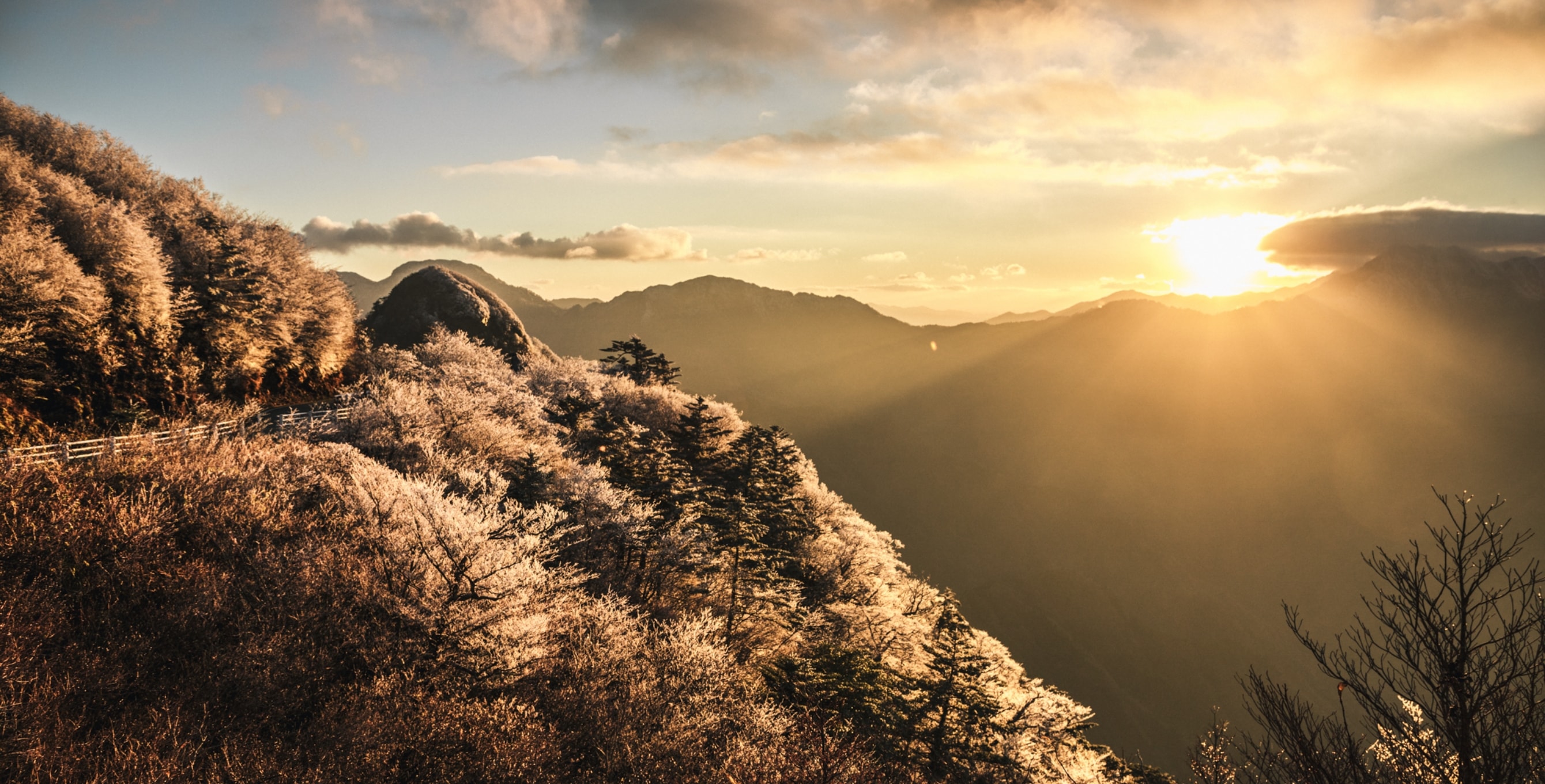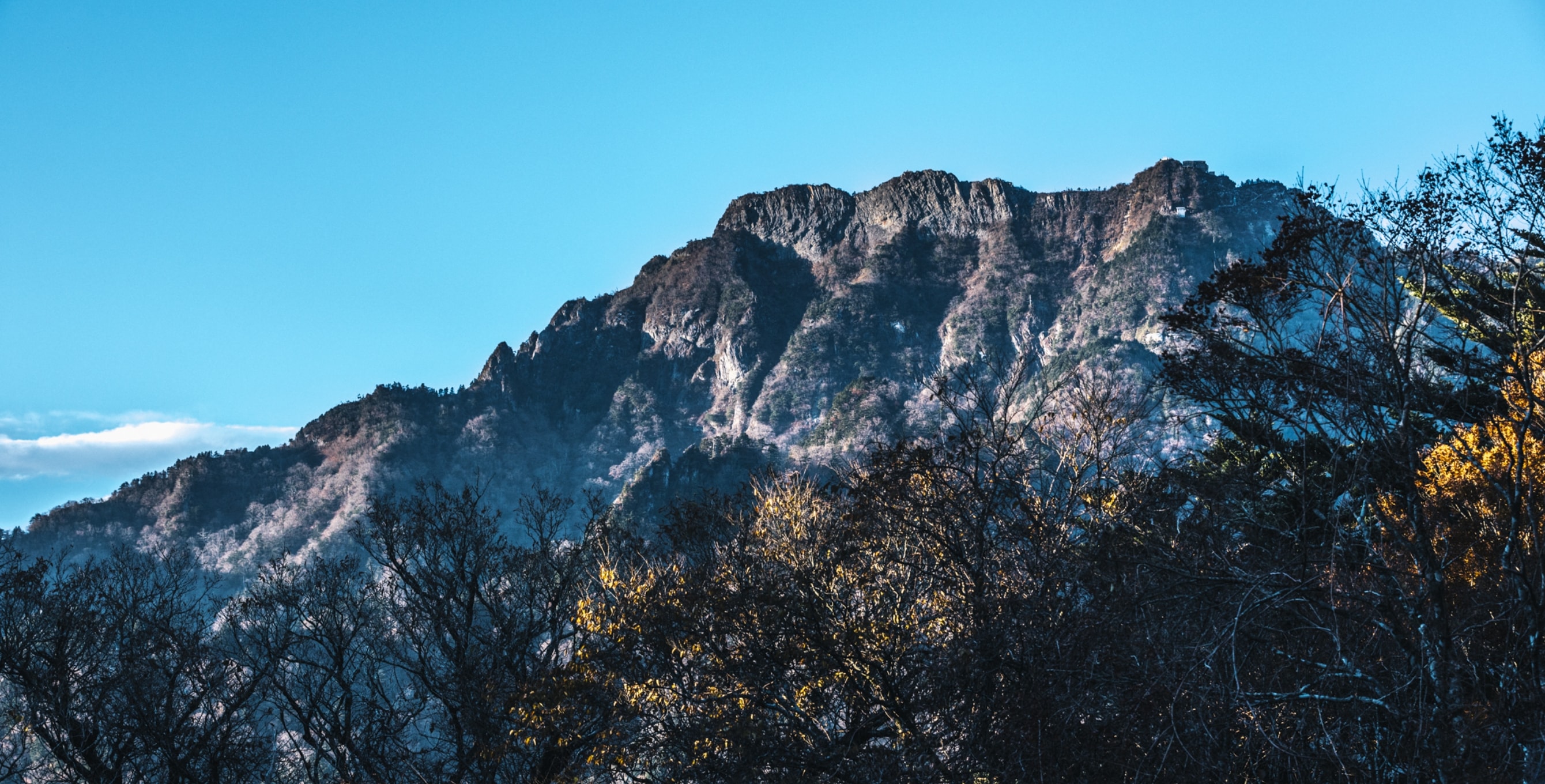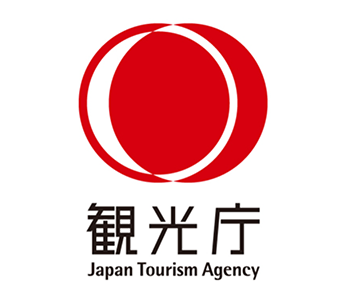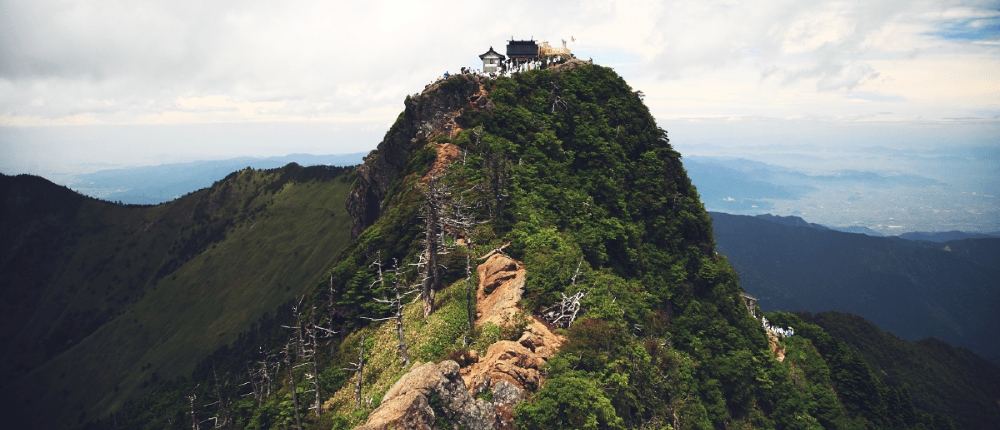01. Ishizuchi Jinja Shrine: Kuchinomiya Honsha Main Shrine
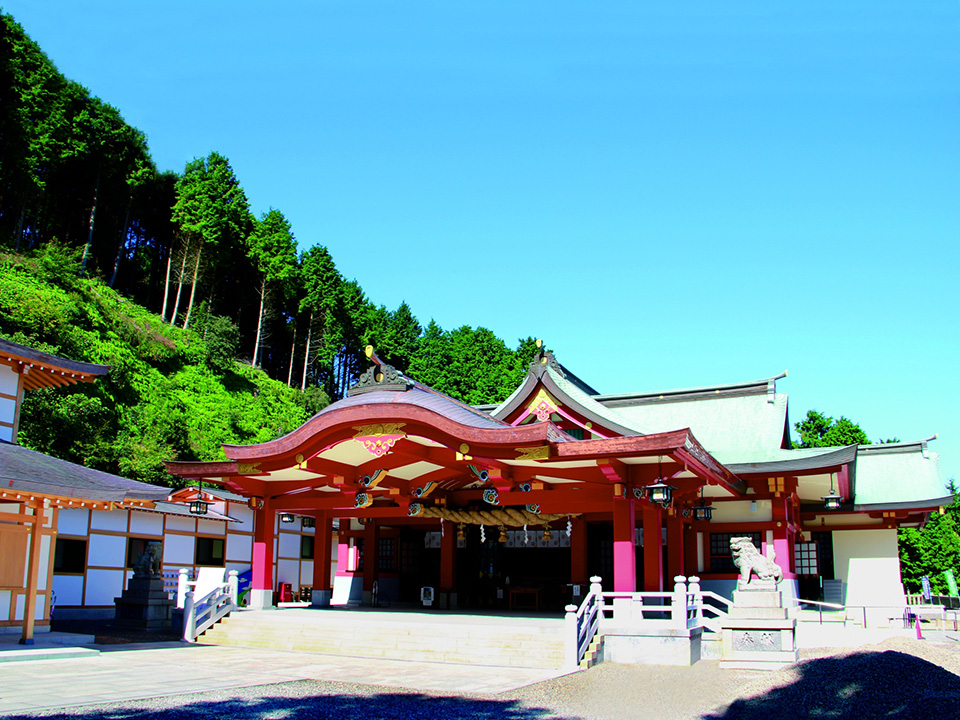
In the ascetic Shugendō religion, mountains are an object of worship. Mt. Ishizuchi is the embodiment of Ishizuchi-biko no Mikoto, the second son of the creator deities Izanagi no Mikoto and Izanami no Mikoto. Adherents honor Ishizuchi-biko for his kindness, wisdom, and bravery, and they pray to him to ensure the safety of their families, to ward off evil, and to heal them from illness.
Shugendō practices incorporate both Buddhist and Shinto elements, and practitioners believe many Shinto deities to be manifestations of Buddhist deities or vice versa. Climbing the mountain to be closer to the deities is an important aspect of the Shugendō faith. Religious training on Mt. Ishizuchi began in the seventh century, after the mountain was summited for the first time by an ascetic named En no Gyōja (634–701). Over the following millennia, the religious community on Mt. Ishizuchi incorporated traditions from Buddhism, Shinto, and other faiths, resulting in the construction of shrines and temples at various spots on and around the mountain.
In 1868, Shinto was declared the official state belief system of Japan, and the government ordered the separation of Buddhism and Shinto. Worship of Mt. Ishizuchi as the deity Ishizuchi-biko no Mikoto came to be led by Ishizuchi Jinja Shrine, a Shinto shrine with multiple branches.
Ishizuchi Jinja’s main shrine, Kuchinomiya Honsha, is located at the foot of Mt. Ishizuchi. A freshwater spring is located on the shrine’s premises, and the water that bubbles up is considered holy. It is free to drink and take home, and the shrine sells coffee made with it.
In addition to housing Ishizuchi Jinja’s administrative offices, Kuchinomiya Honsha is where many Shugendō practitioners purify themselves before beginning a journey up the mountain
02. Misogi
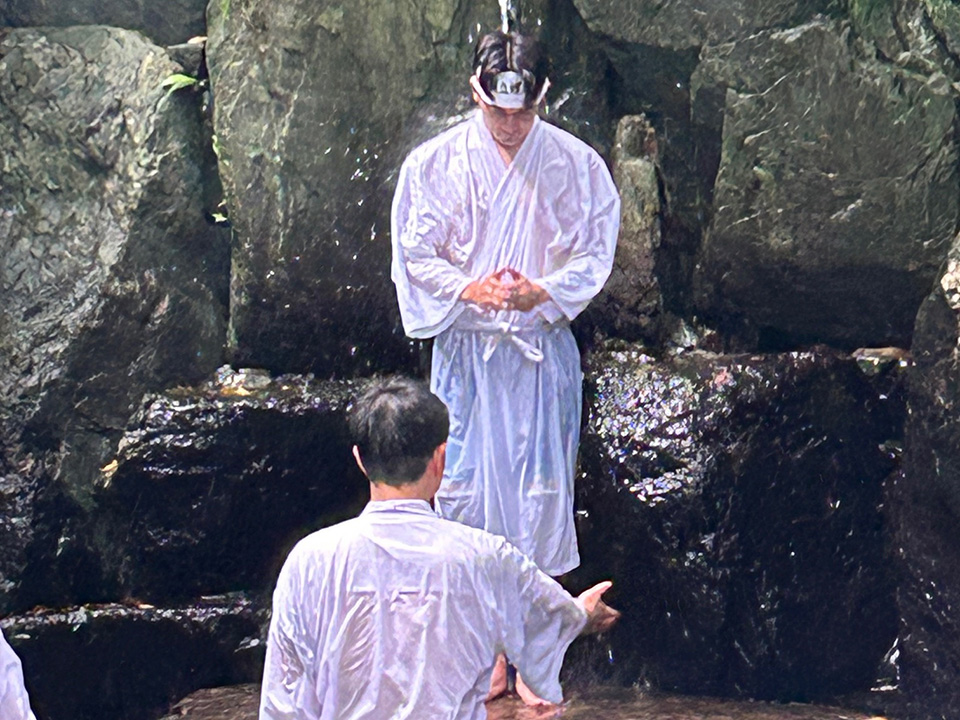
For practitioners of Shugendō, mountains are holy places. By reaching a mountain’s summit or completing other physical trials, practitioners believe they can attain spiritual power. Before beginning an ordeal, however, worshippers must first cleanse themselves of physical and spiritual impurity through a ritual called misogi.
Ritual purification, such as the washing of hands and mouth before entering a shrine or temple, is important in many Japanese religious traditions. Although Misogi is more rigorous, the intent is the same: preparing oneself to approach a deity. The specifics of the Misogi ritual vary according to religious traditions, but it is usually practiced in natural bodies of water like waterfalls, rivers, or the sea.
Misogi at Ishizuchi Jinja is performed at a pond with a waterfall, located a short distance from the main shrine buildings at the foot of Mt. Ishizuchi. Participants wear white garments and prepare to enter the water by singing. They also gesture in ways that represent spiritual actions, such as rowing a boat to reach the deities, shaking the impurities loose from their soul, and cutting the impurities away. After these movements, they bow toward the shrine, enter the pond, chant, and then stand beneath the small waterfall.
Misogi is thought to make a Shugendō practitioner both more receptive to the wisdom and power of nature and more focused for the strenuous training ahead.
03. Ishizuchi Jinja Shrine: Chūgū Jōju-sha Branch Shrine

This shrine is located about three-quarters of the way up Mt. Ishizuchi. According to legend, the ascetic En no Gyōja (634–701) had failed in many attempts to ascend Mt. Ishizuchi and was about to give up. He then encountered a man sharpening an axe. En no Gyōja asked the man what he was doing, and the man replied that he was sharpening his axe down to the size of a needle. Inspired by the man’s determination, En no Gyōja began the ascent once more and at last succeeded. On his way down, he stopped at where Chūgū Jōju-sha Shrine now stands, looked back at the summit, and said, “My wish has been fulfilled.” “Jōju” means “fulfillment,” and the shrine takes its name from En no Gyōja’s utterance. The shrine is often simply known as Jōju-sha.
Today, the majority of visitors to Jōju-sha take the Ishizuchi Ropeway most of the way up the mountain and then hike approximately 30 minutes to the shrine. Jōju-sha’s Mikaeri Yōhaiden Hall marks the spot where En no Gyōja stood and looked back toward the summit. While the inner sanctuary of many shrine buildings is screened from view, the back of the Mikaeri Yōhaiden is a wide window that frames Mt. Ishizuchi. Within the hall are a statue of En no Gyōja and other objects associated with Shugendō, such as a massive conch shell and masks of supernatural creatures called tengu.
The holy objects enshrined at Jōju-sha are three statues of Ishizuchi-biko no Mikoto, each holding a different item that represents a distinct virtue: a jewel for kindness, a mirror for wisdom, and a sword for bravery. Worshippers at Jōju-sha can request a ritual called Go-Shinzō Haitai. During the ritual, each statue is pressed against the back of the worshipper, imparting spiritual blessings and power.
En no Gyōja’s ascent to the summit “opened” Mt. Ishizuchi to spiritual practice. Shugendō practitioners worship the mountain and believe climbing it is a vital part of their spiritual progression. For practitioners and secular hikers alike, the traditional departure point is through the Jōju-sha torii gate that marks the path up the mountain. It is roughly three hours to the summit, and the route includes three cliff faces with large iron climbing chains. For Shugendō practitioners the physical and mental challenge is part of the spiritual exercise of climbing Mt. Ishizuchi. There is also an easier alternative course, which most hikers use to reach the summit.
04. Ishizuchi Tozan Ropeway
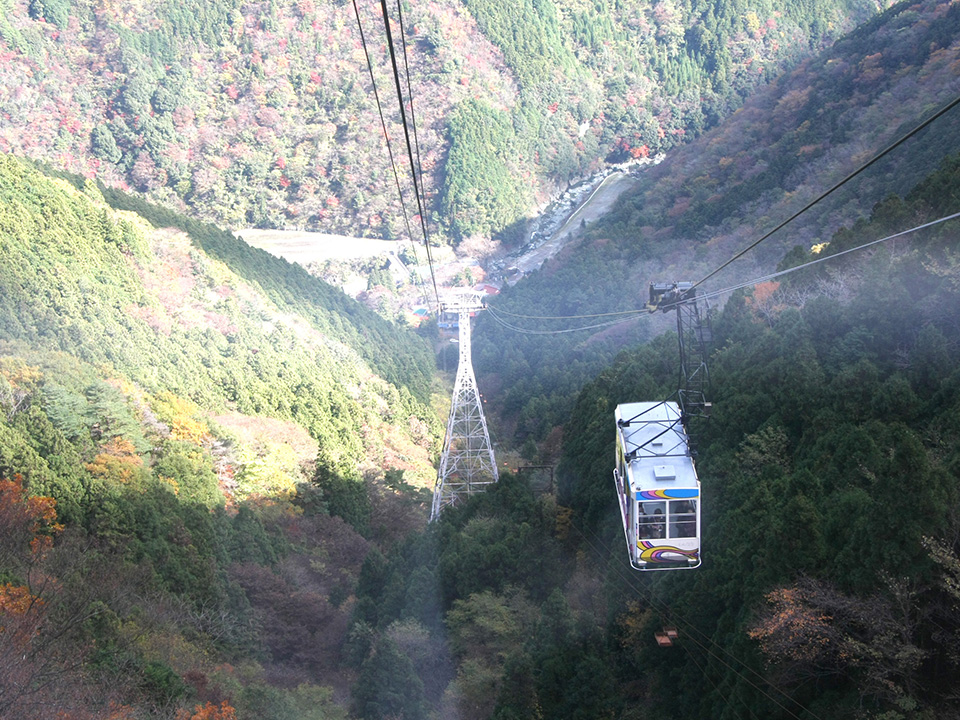
The view from the ropeway car is spectacular on clear days, encompassing a wide vista of green mountains, deep valleys, scattered waterfalls, and a river filled with blue boulders. The Ishizuchi Tozan Ropeway is the easiest way to visit Chūgū Jōju-sha Shrine. In a journey of seven and a half minutes, the ropeway covers 1,814 meters and ascends approximately 1,300 meters. As the ropeway rises in elevation, the mountain’s vegetation changes, and the temperature drops—there is an average difference of 7 degrees Celsius between the upper and lower stations. From the upper ropeway station, Chūgū Jōju-sha is accessible via a 30-minute hike or a quick ride on a ski lift.
The ropeway was first opened in 1968. Cars depart three times an hour, but operating hours may vary depending on the season, day of the week, or occasion. From July 1 to July 10, the ropeway opens as early as 3:00 a.m. on weekends to accommodate an influx of worshippers from around the country. They come to celebrate the “opening” of Mt. Ishizuchi, in remembrance of when it was first used as a site of ascetic training.
05. Ishizuchi Jinja Shrine: Tsuchigoya Yōhaiden Hall and Okunomiya Chōjō-sha Branch Shrine
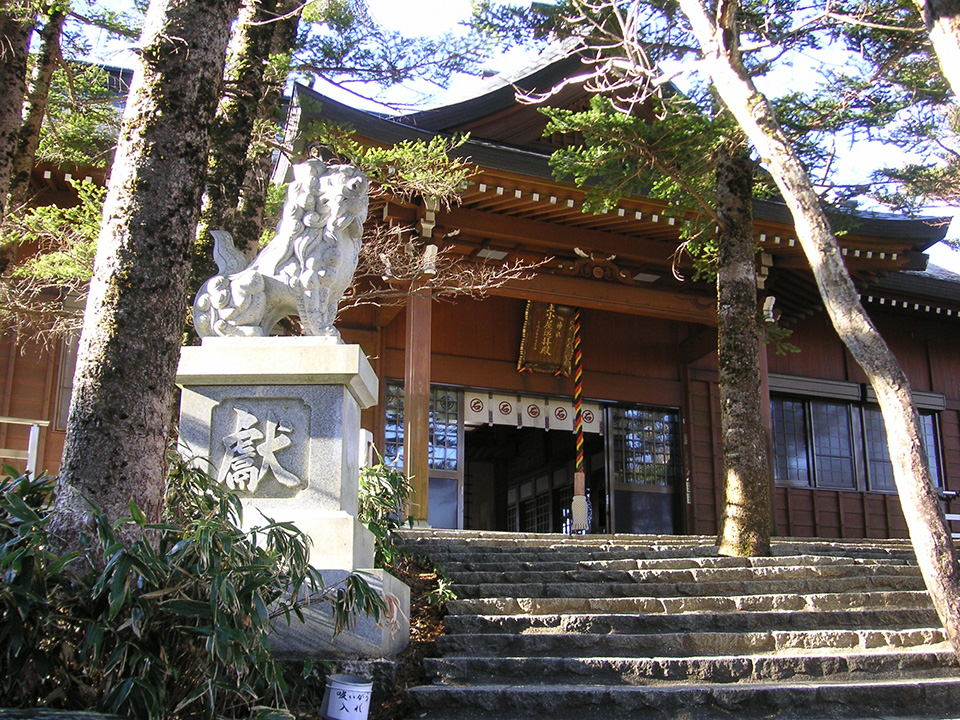
One of the most popular trails for summiting Mt. Ishizuchi begins at Tsuchigoya Yōhaiden Hall. The hall was built as the terminus of the Ishizuchi Skyline, a scenic driving route that winds through the conifer forests towards Mt. Ishizuchi. The café and rest area near the shrine are a good place for drivers and cyclists to relax after the long ascent.
Tsuchigoya Yōhaiden Hall is used for rituals dedicated to the worship of Mt. Ishizuchi. Many hikers also visit the shrine to pray for protection on their way up the mountain. The 4.6-kilometer trail that starts at Tsuchigoya Yōhaiden Hall begins in a forest of mostly Nikko fir and ends at the top of Mt. Misen, one of the three jagged peaks of Mt. Ishizuchi. The trail takes approximately two and a half hours and ascends about 500 meters to the summit, 1,982 meters above sea level.
The top of Mt. Misen is where the deity Ishizuchi-biko no Mikoto is said to have first descended to earth. The shrine built at the summit, Okunomiya Chōjō-sha Shrine, is the most sacred of the shrines that make up Ishizuchi Jinja. The view from Chōjō-sha is spectacular, and on clear days hikers will have an excellent view of the neighboring hammer-shaped peak, Mt. Tengu, which is often shrouded in clouds.
Although the trail that starts from Tsuchigoya Yōhaiden Hall is easier than the one from Jōju-sha, the trails converge for the final 600 meters. The challenging last stretch includes two of the three rock cliffs on the traditional Shugendō route, each of which is scaled using chains. It is unclear when the 65- and 68-meter chains were first installed, but there are records of portions being replaced from over 240 years ago. The chains are the most technically challenging part of the climb to the summit. The majority of hikers take an alternate route that winds around the cliffs and is much safer. Even so, the safer route is made with unfenced grated platforms, making it just as much of a spiritual test for those afraid of heights. The stunning view at the summit, however, is a worthwhile reward.
06. Mt. Ishizuchi
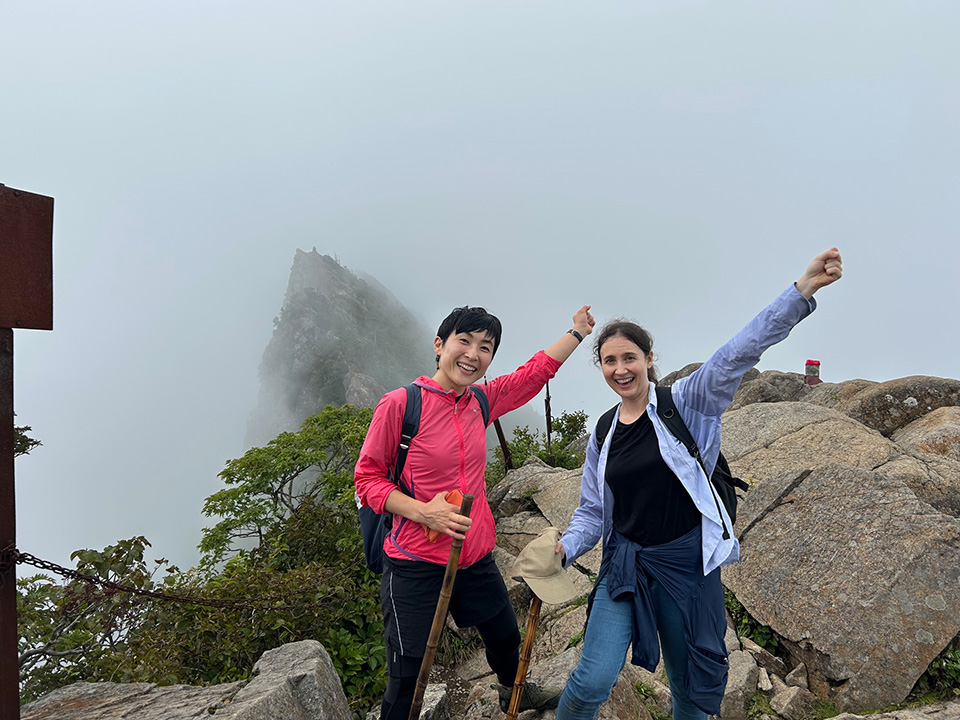
Mt. Ishizuchi (1,982 m) is the tallest mountain in western Japan. Its summit is comprised of three peaks: Mt. Misen, Mt. Nansenbō, and the highest, Mt. Tengu. Mt. Ishizuchi rises sharply from sea level and stands like a wide shield protecting the city of Saijō from the south. Rainfall is heavy on the northern face of the mountain, and the water flows down into the ground, raising the water table high enough that there are over 3,000 freshwater springs throughout the city.
Mt. Ishizuchi has been the object of worship by practitioners of the Shugendō faith since the seventh century and is considered one of Japan’s most sacred mountains. En no Gyōja (634–701) is believed to have “opened” the mountain to spiritual practice when he reached the summit in 685. He then performed various Shugendō rituals to worship the mountain deity Ishizuchi-biko no Mikoto. Throughout his time on the mountain, En no Gyōja had many spiritual encounters with the deities that are now worshipped on the mountain, including Ishizuchi-biko no Mikoto.
Shugendō combines both Buddhist and Shinto beliefs with a focus on worshipping natural phenomena as expressions of the supernatural. Many of the shrines and temples on Mt. Ishizuchi mark the spots where En no Gyōja felt the presence of deities. Later, Kūkai (774–835), the founder of Shingon Buddhism and the Shikoku 88-Temple Pilgrimage, contributed to the development of the faith traditions on Mt. Ishizuchi by training on the mountain in his youth.
The Mt. Ishizuchi faith was drastically changed in 1868, when the government decreed a separation of Shinto and Buddhist practices. The government was pushing to westernize Japan, and part of that process was the establishment of a state religion similar to the Church of England. Shinto beliefs were seen as natively Japanese while Buddhism was considered to be the product of foreign influence. The Mt. Ishizuchi faith became exclusively Shinto, and Ishizuchi Jinja Shrine grew in prominence as Buddhist traditions were downplayed.
The syncretic faith traditions were not entirely wiped out, however, and by the early twentieth century many Buddhist temples were reinstated. Today the temples and shrines on and around Mt. Ishizuchi maintain the traditions of the Mt. Ishizuchi faith and local Shugendō customs. This includes the formation of the Ishizuchi Ryūra (Conch Shell) Association in 1994, which retains the practice of blowing conch shells in worship and ascetic training.
Many of the shrines and temples on Mt. Ishizuchi are associated with tengu, the sometimes crow-like, sometimes goblin-like supernatural creatures for which the mountain’s highest peak is named. Tengu are closely associated with Shugendō and are often depicted wearing the attire of practitioners. Their intentions are always mysterious to humans, but there are many stories of them providing wisdom to those who train in the mountains.
07. Mt. Kamegamori
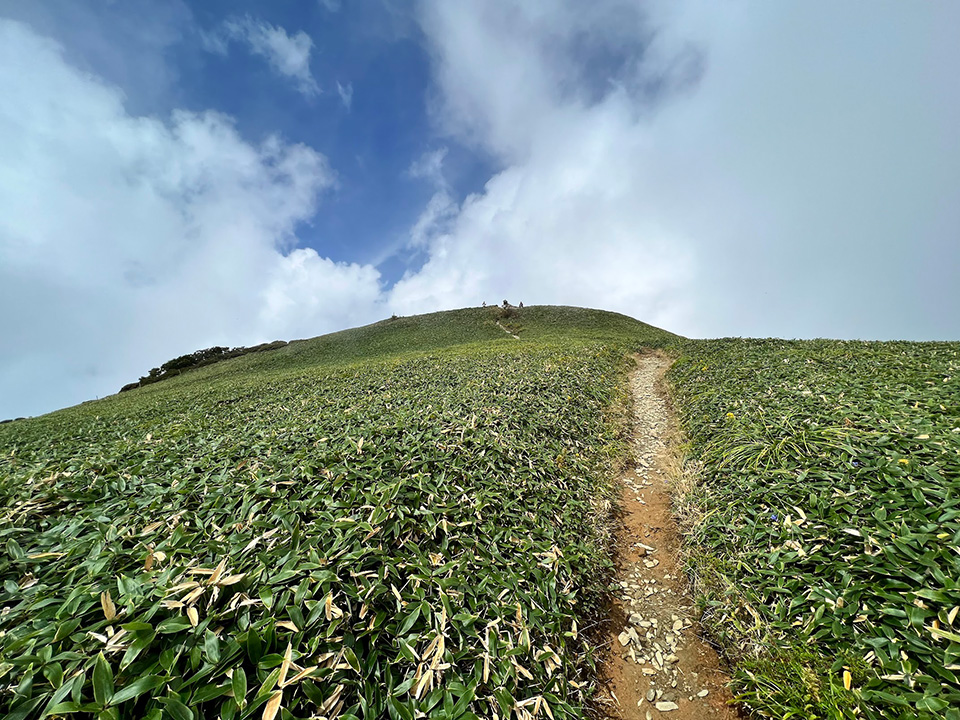
Mt. Kamegamori (1,897 m) is one of the tallest mountains in Ishizuchi Quasi-National Park, and it is well loved for its campgrounds and hiking trails. The main trail begins at the end of the UFO Line and ascends a gentle 230 meters to the top of the mountain. Most of the trail follows the ridgeline, cutting through swaths of sasa (broad-leaf bamboo) dotted with the twisted trunks of withered firs and hemlocks.
On top of Mt. Kamegamori, the sky expands overhead with only Mt. Ishizuchi to the west breaking the horizon. Mt. Kamegamori is named for a pool of fresh spring water on the mountain’s western slope that looks like a jug. Called Kametsubo, the pool has long been a sacred site and source of drinking water for Shugendō practitioners who climb the mountain as part of their spiritual practice.
08. Shugendō on Mt. Ishizuchi
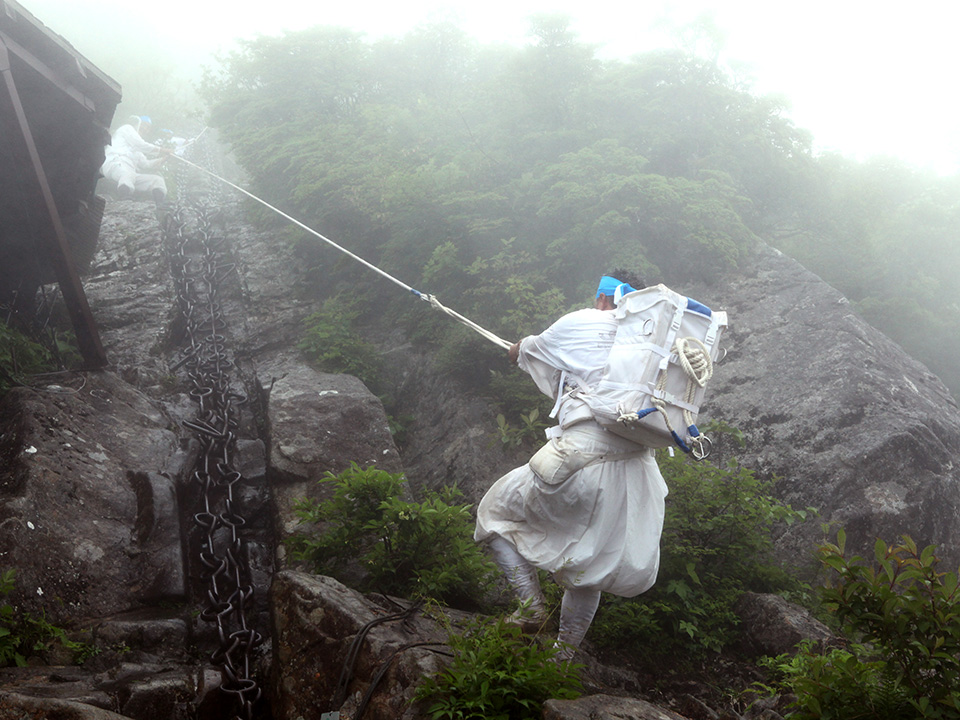
Shugendō is a religious practice centered on mountain worship and ascetic training. It incorporates Buddhist, Shinto, and Daoist practices, and adherents live throughout Japan. Practitioners of Shugendō believe they can attain spiritual power through physical endurance and discipline. The founder of Shugendō is En no Gyōja (634–701), also known as En no Ozunu, who trained on Mt. Ishizuchi in his youth.
09. Maegamiji Temple
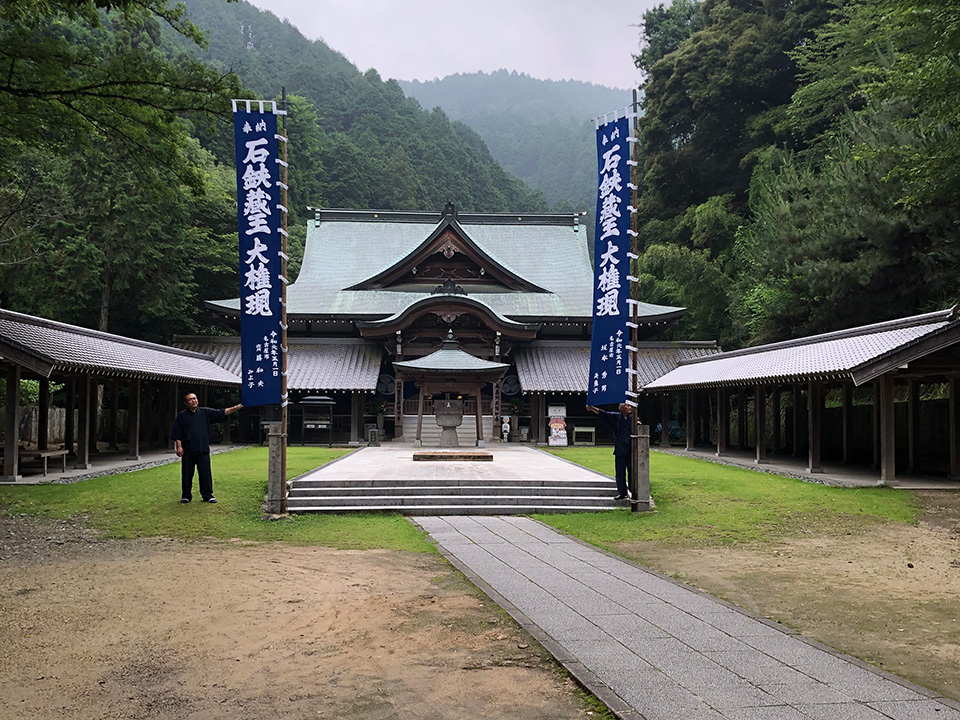
Maegamiji Temple is part of the Shingon school of Esoteric Buddhism. Its name literally means “the temple in front of the gods.” Maegamiji was the main temple for practicing Shugendō and the Mt. Ishizuchi faith until the government-ordered separation of Shinto and Buddhism in 1868.
Before the separation decree, many kami (native Japanese deities) were thought to be the local manifestations of Buddhist deities. The deities took on the form of kami to make it easier for Japanese people to understand Buddhist teachings. Together, a Buddhist deity and its kami counterpart are called a gongen. While training on Mt. Ishizuchi, En no Gyōja felt the presence of the Buddhas Shakyamuni and Amida Nyorai manifested as the deity Ishizuchisan Daigongen, meaning the “Great Gongen of Mt. Ishizuchi.” En no Gyōja then carved three statues of Ishizuchisan Daigongen. Today, the priests of Maegamiji display the three gongen statues in the Gongendō Hall and conduct a ritual evoking the deities only a few times a year.
The temple was named in the late eighth century by Emperor Kanmu (735–806) in thanks for his recovery from an illness after having prayers performed on Mt. Ishizuchi. Many subsequent emperors also became patrons of the temple.
Until the government ordered the separation of Shinto and Buddhism, practices from both faiths were combined in the worship of Mt. Ishizuchi. After the order, Buddhism was suppressed on the mountain, and worship on Mt. Ishizuchi became predominantly Shinto. Maegamiji was abandoned until 1889, when it was incorporated into the Shingon school of Esoteric Buddhism. It is now temple #64 on the Shikoku Pilgrimage.
10. Gokurakuji Temple
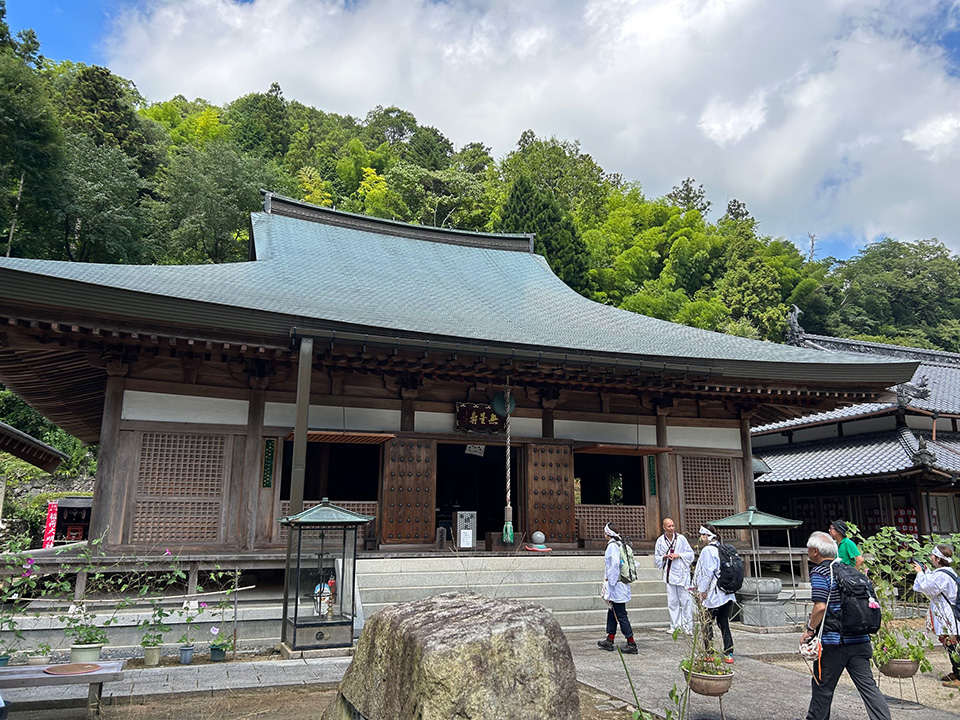
Gokurakuji Temple is a Shingon Esoteric Buddhist temple located on Mt. Ishizuchi. Shugendō, or ascetic mountain worship, has been practiced here since its founder, En no Gyōja (634–701), trained on Mt. Ishizuchi in his youth over 1,300 years ago. It is said that after En no Gyōja died in Minoh (modern-day Osaka Prefecture), he became a supernatural creature called a tengu and returned to Mt. Ishizuchi to watch over Shugendō practitioners. As a tengu, his name is Ishizuchisan Hōkibō Daitengu, and Gokurakuji’s Hōkibōdō Hall is dedicated to him. Like many places on the mountain, it is decorated with items associated with tengu, such as the long-nosed red masks and wooden sandals with a single large cleat. Hōkibōdō Hall is located near the lower station of the Ishizuchi Tozan Ropeway.
Gokurakuji was originally located on nearby Mt. Ryūōzan and was called Tengaiji Temple. Before climbing Mt. Ishizuchi, En no Gyōja purified himself in the holy Fudōgataki Waterfall near where Tengaiji was later built. Many centuries later, in 1350, Tengaiji burned down. Its rebuilders decided to move the temple to its current location, as they wanted a place where they could see Mt. Ryūōzan to continue their worship. They named the new temple Gokurakuji, meaning “Temple of Paradise.” The main hall stands atop a steep flight of 330 steps, which are intended to create the sense of ascending to paradise.
The three primary objects of worship at Gokurakuji are a set of statues called the Amida Sanzon. The trio of deities is depicted with the Buddha Amida in the center, Kannon Bosatsu on the right, and Seishi Bosatsu on the left. Kannon represents Amida’s grace in saving all beings, and Seishi represents Amida’s wisdom. En no Gyōja had a vision of these deities manifested as the deity Ishizuchikongō Zaō Daigongen, who is depicted with a wrathful expression and a dynamic pose. The statues of the Amida Triad, however, are usually serene figures with gentle, inviting expressions. The fierceness of Zaō Daigongen comes from his compassion for living things, which leads him to encourage believers into righteousness in the manner of a strict schoolteacher.
At Gokurakuji, Ishizuchikongō Zaō Daigongen is worshipped in the Zaōden Hall. The center statue in the hall is a “hidden” statue, meaning it is only revealed for certain ceremonies.
11. Yokomineji Temple
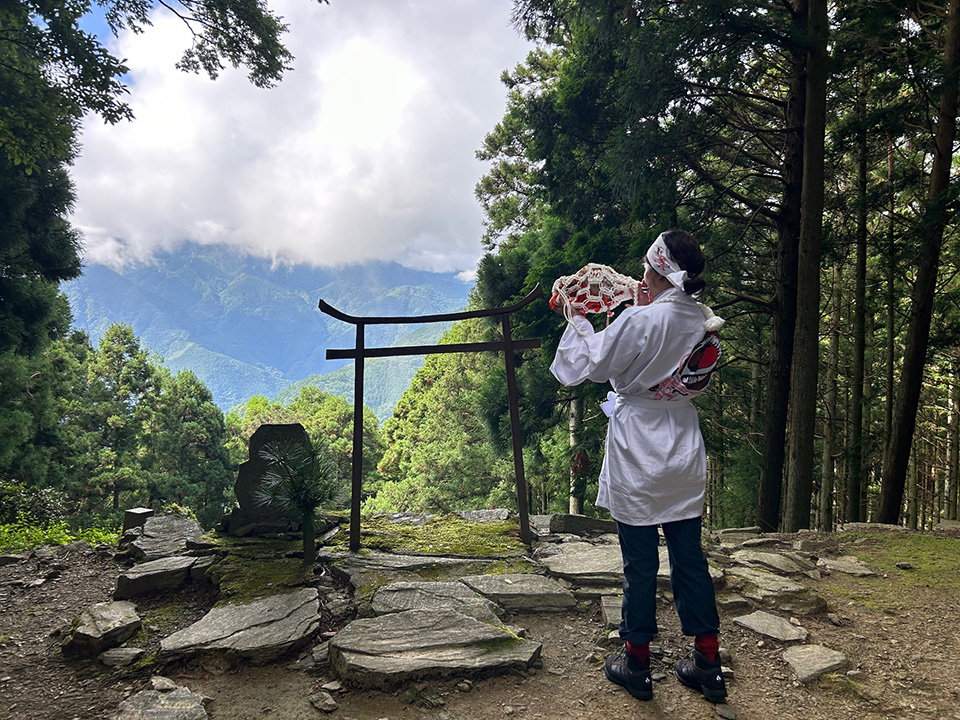
Yokomineji Temple is the 60th temple on the Shikoku Pilgrimage and is part of the Omuro sect in the Shingon school of Esoteric Buddhism. The principal deity worshipped at Yokomineji is the Buddha Dainichi Nyorai. The temple’s statue of Dainichi was carved by Kūkai (774–835), who is the founder of the Shingon school and known posthumously as Kōbō Daishi. Kūkai practiced ascetic training on and around Mt. Ishizuchi, and he started the practice of Hoshi-kuyō, or “Rites for Stars,” to ward off evil. Hoshi-kuyō is still conducted at Yokomineji in a forest clearing called Hoshigamori, or “Forest of Stars,” about 500 meters from the main hall. There is a small iron torii gate at Hoshigamori that frames a view of Mt. Ishizuchi. It has stood there since 1742.
Hoshigamori was also the route through which En no Gyōja (634–701) is believed to have approached Mt. Ishizuchi. At Hoshigamori, he felt the presence of a mountain deity called Zaō Gongen and carved a statue of Zaō Gongen from rhododendron wood. Yokomineji’s earliest origins were as a place to house this statue. When Kūkai later practiced Hoshi-kuyō here, he likewise felt the presence of Zaō Gongen.
When the government ordered the separation of Shinto and Buddhism in 1868, the faith practiced at Mt. Ishizuchi became predominantly Shinto. For a time, Yokomineji tried to operate within Shinto parameters by downplaying the statue of Dainichi Nyorai, but the temple was eventually abandoned. However, in 1909, it was reopened and resumed its status as a Buddhist temple.
12. Saijō’s Fresh Waters: Uchinuki Springs
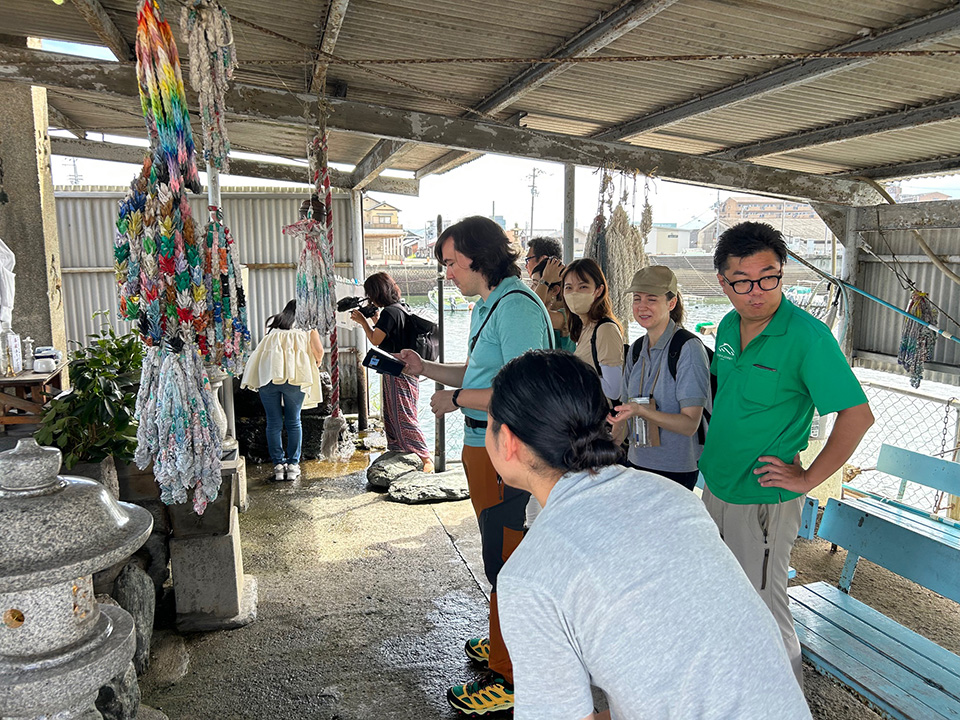
Approximately half of all residents in Saijō City get their water from one of the city’s 30,000 freshwater springs. Water runs off of steep Mt. Ishizuchi and is kept from sinking too deeply into the ground by a relatively shallow layer of impermeable rock. The water instead wells up near the coast, raising the water table to just below the surface. Uchinuki, the local word for spring, literally means “hole punch.” It refers to the idea that residents need only poke a hole in the ground for water to bubble up immediately.
Many of the Uchinuki are mineral springs with soft water, which improves the taste of coffee and tea. Despite this potential selling point, local cafes hardly bother advertising it since their customers are already well-acquainted with the water’s benefits. Each spring is said to have its own flavor, and although many residents say the water from their own springs tastes best, there are also many public springs where anyone can fill bottles for free.
-
Kamo Jinja Shrine’s Uchinuki
Kamo Jinja Shrine is located on the western bank of the Kamo River, down a short flight of steps that have old iron chains from the routes used by Shugendō practitioners on Mt. Ishizuchi as banisters. In a 1996 taste test of famous spring water from around the country, Kamo Jinja Shrine’s Uchinuki spring was chosen as the best. Because it wells up inside the shrine grounds, it is considered sacred and nicknamed “water of the gods.” The spring’s fountain is designed to make water collection easy for anyone who wishes to drink, and it doubles as the place to purify one’s hands and mouth before entering the shrine.
-
Kōbō-sui: Kōbō Daishi’s Uchinuki
Kūkai (774–835), posthumously known as Kōbō Daishi, was the founder of Shingon Buddhism. As part of his calling, he traveled around Japan in a time when sanitary water could be hard to find. Legends from around the country state that whenever he struck his staff on the ground, water bubbled forth. Kōbō-sui is one of those miraculous springs, and its water is considered some of the best in Saijō. Its taste is sweet and mildly salty.
This freshwater spring comes from groundwater under the ocean floor, and it used to appear only at low tide. Now, however, it flows up through a pipe to a jetty that juts into the harbor, and people can visit to collect the water at any time.
13. Ishizuchi Sake Brewery

Located at the foot of its mountain namesake, Ishizuchi Sake Brewery uses water from an Uchinuki freshwater spring to make its sake. The soft water and the care taken with every step of the brewing process give the sake a clear and fragrant aroma and a taste that pairs well with local food.
This family business has been in operation for over 100 years. It is currently led by a pair of brothers under the motto, “Brew for the customers who love Ishizuchi.” The brewing process is mostly traditional, but they have incorporated some modern production techniques, such as pressing and squeezing the mash in a refrigerator, in order to brew highly aromatic and delicately flavored sake.
Although Ishizuchi Sake Brewery has a wide range of sake made with various rice types and brewing methods, it specializes in Junmai and Junmai Ginjō sakes. These are premium styles made only from rice, water, yeast, and koji mold. Their aim is to create sake that tastes better with each cup.
14. Seiryō Sake Brewery
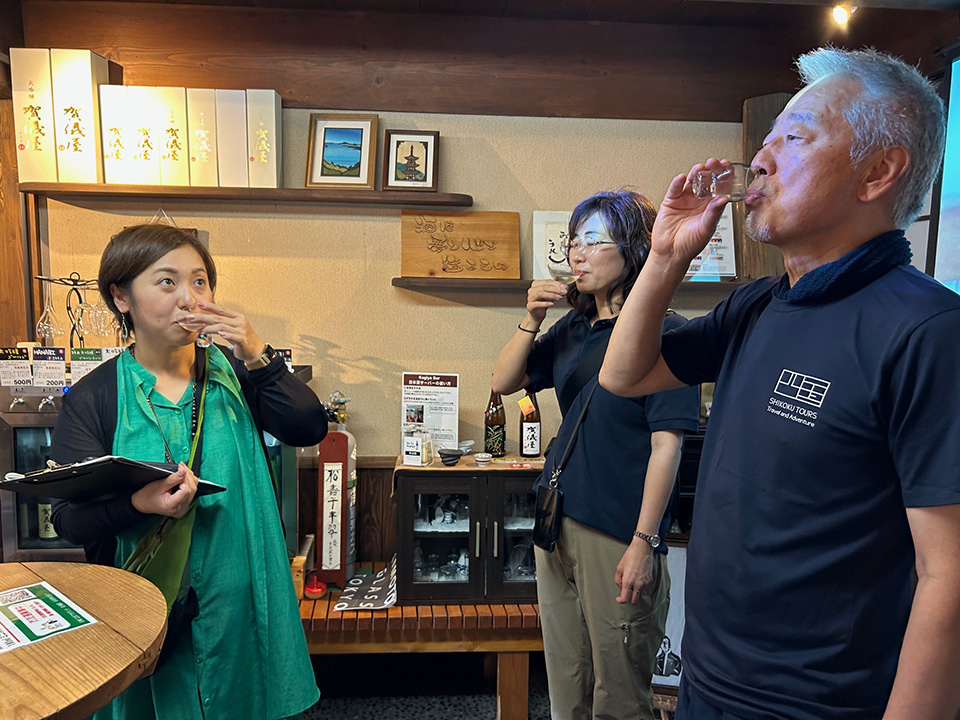
Seiryō Sake Brewery has been in business for over 140 years. One of Saijō’s famed uchinuki freshwater springs flows on their premises, and the brewery uses this soft water for all aspects of sake brewing. The resulting sake has the distinctive light flavor characteristic of sake made using Saijō spring water.
This family-owned business is a pillar in the neighborhood community, hosting tours and events for nearby elementary schools. The origins of the brewery date to the Edo period (1603–1867), when the Sutō family was entrusted with the key to the local rice storehouse. The brewery’s Kagiya sake line is named for this former role: kagiya means “keeper of the keys.” The current CEO, Hidetomo Sutō is the seventh-generation owner.
Seiryō makes sake in a wide variety of styles and flavors, including premium Ginjō and Daiginjō sakes. Toshitaka “Toshi” Sutō, Hidetomo’s younger brother, is the second-in-command brewer, and every year he creates an experimental batch of sake that the brewery releases as “Toshi’s” sake. The family has been guided for generations by a philosophy that good sake can only be made with “dreams and heart.”
The brewery has recently begun selling fermented foods made with sake kasu, or lees, a byproduct of the brewing process. Hidetomo’s mother has long made pickled vegetables and sweet dumplings with the leftover lees. Inspired by neighbors asking her to make more, the company now produces a selection of her specialties to sell alongside its sake.
15. Saijō’s Hot Waters
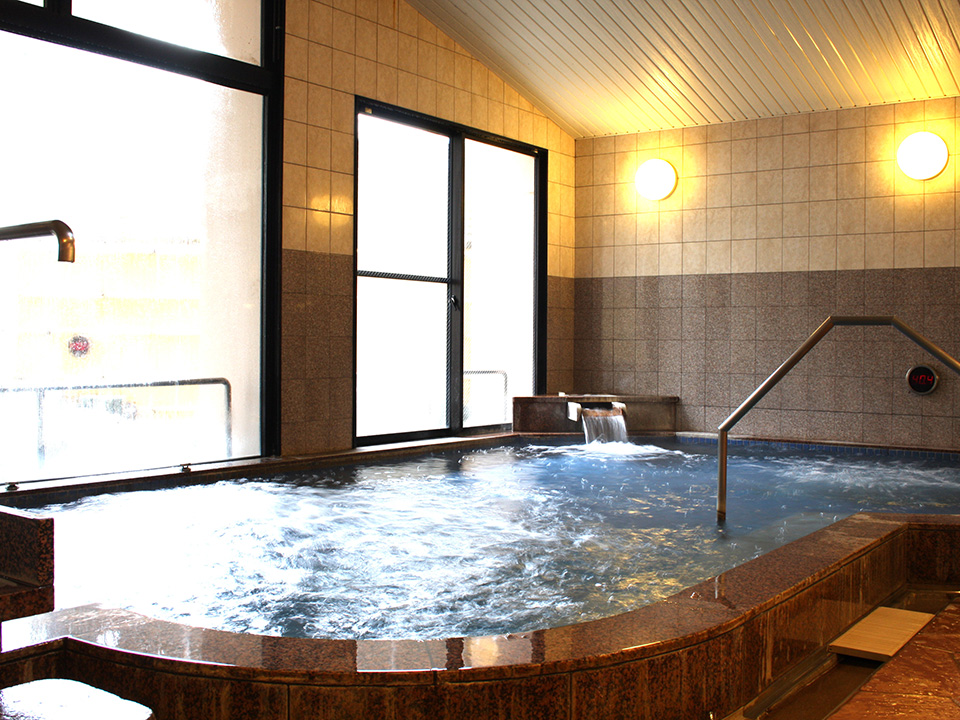
In Japanese, the temperature of a spring determines what it is called. Onsen is the most common term for hot springs, while cold springs go by various names. To be considered an onsen, the water from the spring must be at least 25 degrees Celsius at its source and contain sufficient concentrations of certain minerals.
While few in number, Saijō’s onsen are popular with local residents, hikers, and pilgrims making their way to all 88 temples on the Shikoku Pilgrimage. Although practitioners of Shugendō mountain asceticism start their harrowing climb of Mt. Ishizuchi with ritual purification in cold water, once the trials have been completed, many choose to soak in an onsen to ease their weary bodies.
-
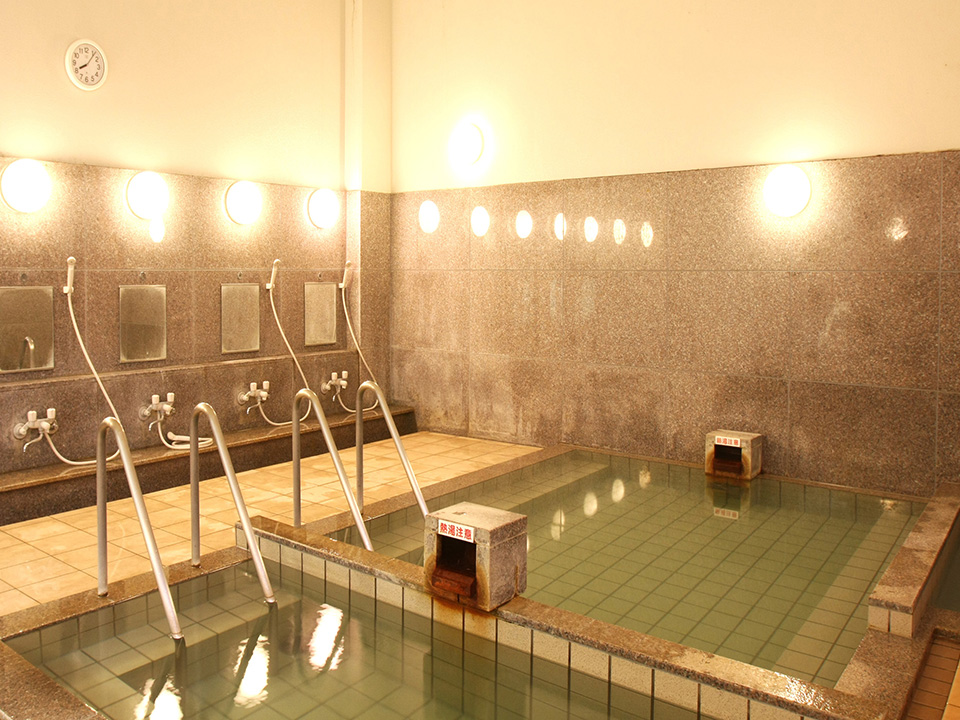
Yunotani Onsen
Said to have been visited long ago by Empress Saimei (594–661), this low-alkaline hot spring has a slight aroma of sulfur. Not far from the main road, it is a favorite among local residents who often visit as part of their daily routine. The facility has lodgings for those on the Shikoku Pilgrimage, as well as private baths, which are recommended for guests with tattoos. Large wood stoves heat the water to a comfortable 39 degrees Celsius.
-
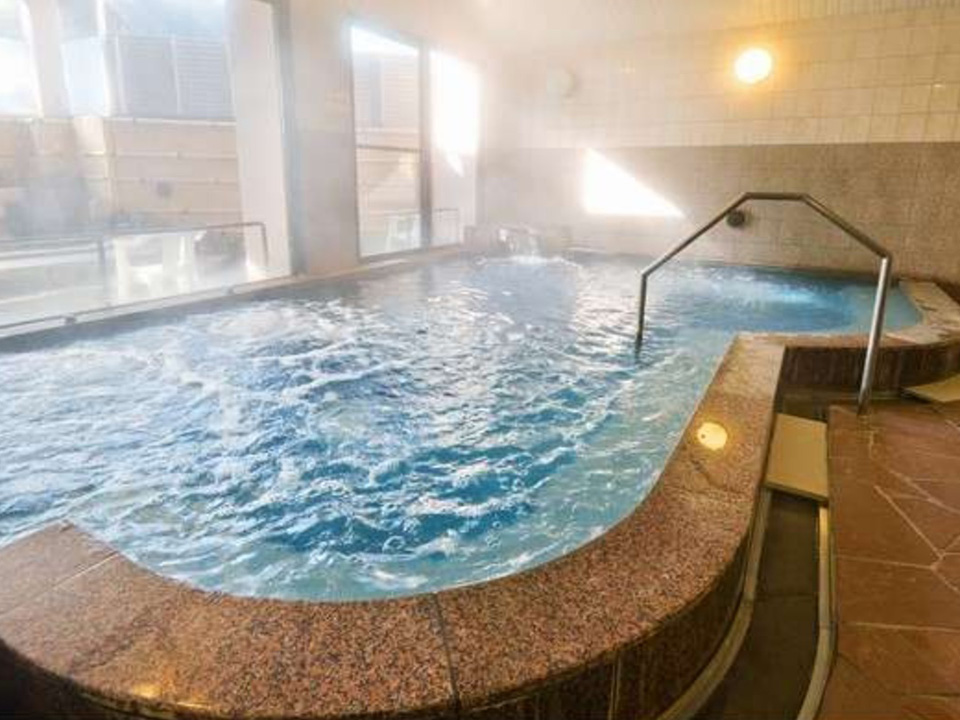
Yunosato Komachi Onsen Shikokuya
Located on National Route 11, this is one of the most convenient onsen stops for travelers going through Saijō. In addition to the low-alkaline hot-spring water that fills the hot and lukewarm baths, the cold-water bath and all of the tap water come from a freshwater spring. Next to the baths are a homestyle Japanese restaurant, a souvenir shop, and a Japanese-style garden with numerous koi to feed.
-
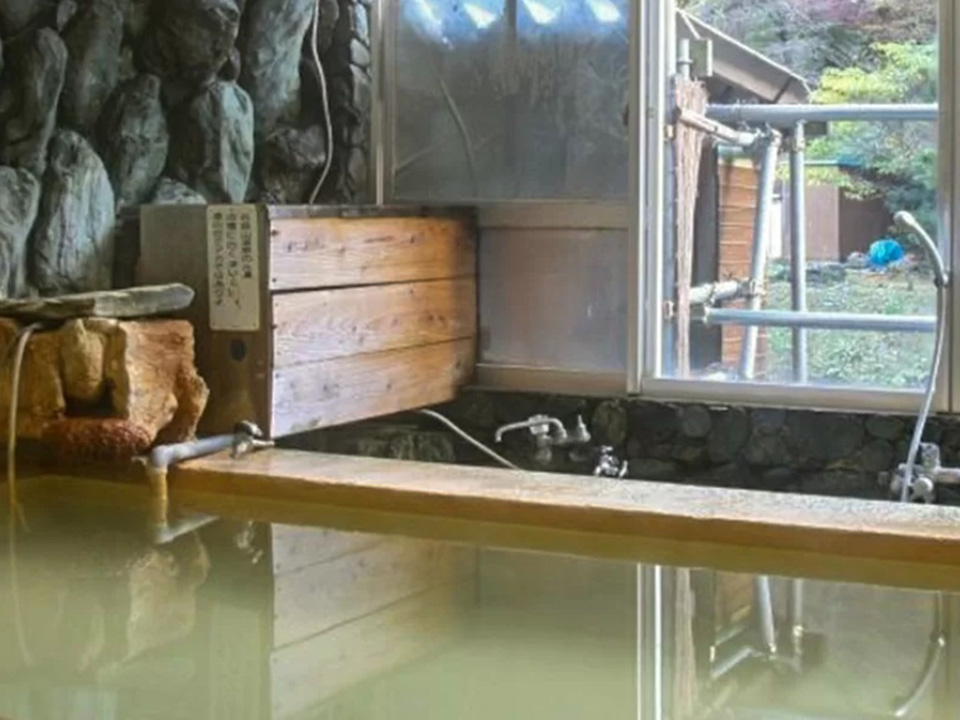
Ichizuchisan Onsen: Kyōya Ryokan
Conveniently located near the lower station of the Ishizuchi Tozan Ropeway, this facility overlooking the Kamo River has long been popular with hikers and skiers. It is classified as a “cold mineral spring” (despite being rather hot) and contains a mix of carbon dioxide, sodium chloride, and bicarbonate that turns the bathwater milky white. The facility is currently open only on weekends or by appointment.
16. Horagai: The Conch-Shell-Blowing Tradition of Mt. Ishizuchi
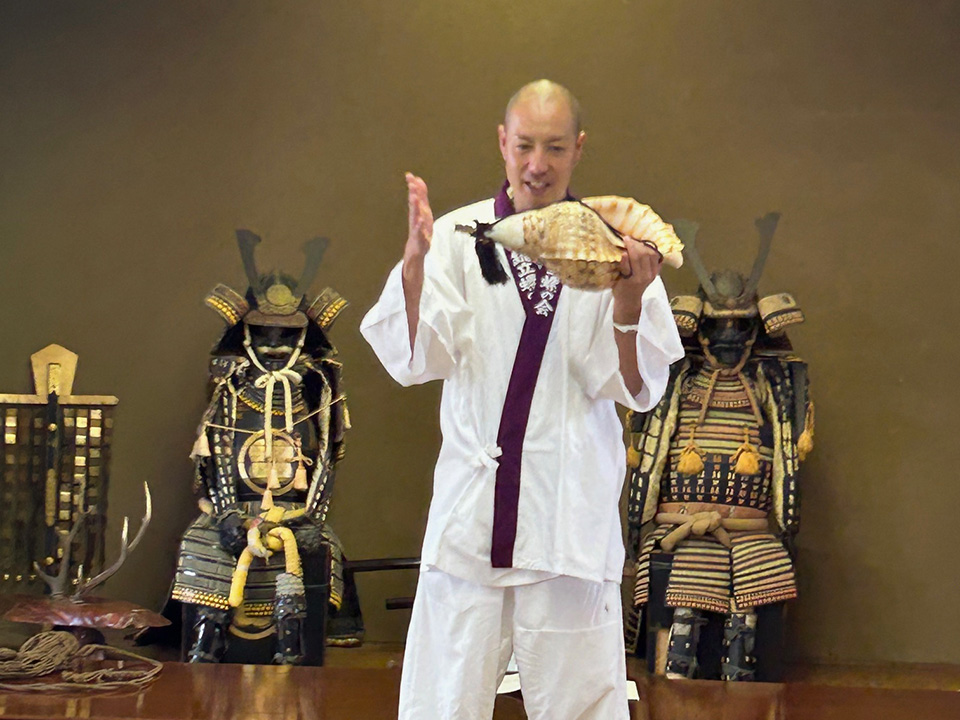
The inside of a conch shell is a natural resonance chamber, and the shells are used by people around the world as horns. In Japan, conch shells, called horagai, have been used in this way for thousands of years. The warbling low notes and sharply rising high notes of the horagai are characteristic sounds of Shugendō mountain asceticism, and they can be heard echoing in the deep valleys even today. In Shugendō, horagai are not considered musical instruments; their sound is an offering to the deities.
The use of horagai is incorporated into many religious rituals in Japan, especially for worshipping a sacred object or during a pilgrimage. For example, Shugendō practitioners believe that to ascend a mountain is to face death, and the successful completion of a pilgrimage to the summit is like being born anew. The sound of the horagai is used to signify the purity of the practitioner’s reborn mind.
Horagai are also used to communicate on the mountain. Blowing the horagai is a polite way of announcing when one is ascending a path, entering a temple, asking to take part in a ritual, or expressing gratitude. The specific meanings of sounds and the methods of blowing to produce them vary according to each mountain’s tradition. Mt. Ishizuchi has a very active culture of horagai use—so common that even the local postman blows a horagai as a greeting while he delivers mail to people living on the mountain.
Although the faith traditions of Mt. Ishizuchi are united by a common site of worship, the shrines and temples that dot the mountain have had many disagreements and feelings of resentment. However, in the spring of 1994, Ishizuchi Jinja Shrine, Maegamiji Temple, Gokurakuji Temple, and Yokomineji Temple set aside their disputes and together formed the Ishizuchi Ryūra (Conch Shell) Association. In addition to protecting, sharing, and teaching local methods and rules regarding the use of horagai, this association also focuses on deepening the wider understanding of the Mt. Ishizuchi faith.
Horagai is difficult to master, and without training it can be difficult even to make any sound at all. The Ishizuchi Ryūra (Conch Shell) Association offers classes for beginners to learn the basics of holding and blowing a horagai, the meanings of various sounds and the different methods of producing them, and the meditative aspects behind the use of horagai in worship.
17. Ochaya Hanahimerō: Geisha Culture in Dōgo Onsen
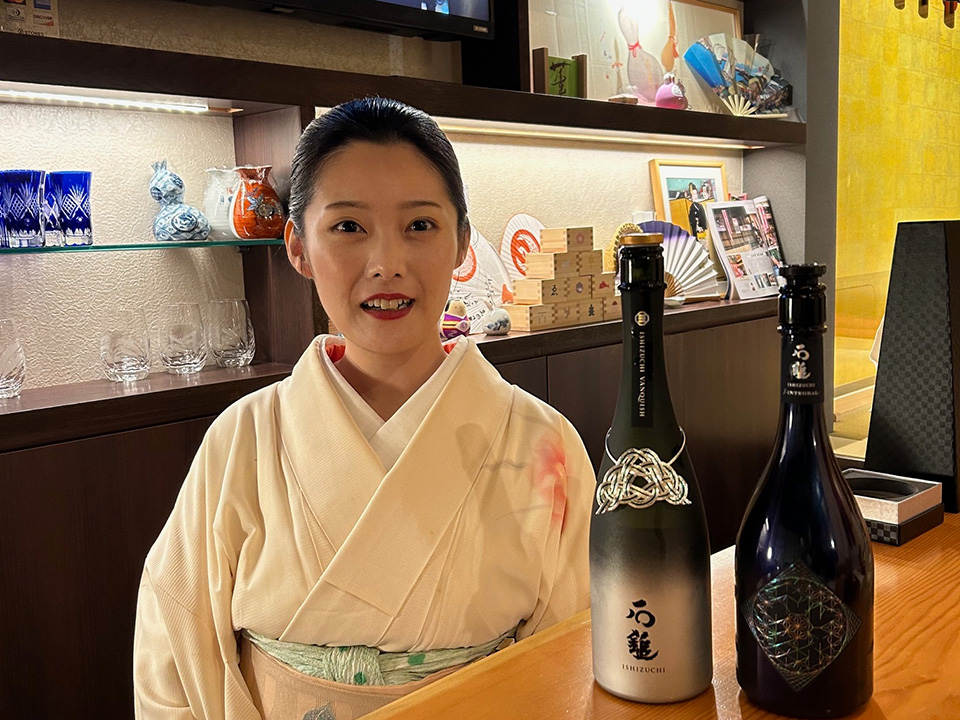
Although many people think of Kyoto as the only place to encounter geisha (called geiko in Kyoto), there is a longstanding tradition of geisha hospitality in hot-spring communities like Dōgo Onsen. Historically, geisha entertained guests with traditional performing arts, like dance and the shamisen, along with conversation and party games.
Dōgo Onsen has never had a centralized area where geisha live and work. Instead, they visit ryokan (traditional-style inns) and other venues around the hot-spring town. As with most traditional professions in Japan, however, geisha have seen a decline in demand, and few ryokan in Dōgo Onsen offer geisha-attended dinners today.
To continue the tradition of geisha, Hanahimerō, an ochaya (teahouse where geisha entertain guests), was opened in 2020 in a renovated house off the main arcade near the Dōgo Onsen Honkan bathhouse. Guests are encouraged to drop in without a reservation if there is space at the first-floor bar. However, most services, such as lunch sets, performances, and ozashiki parties with dances and games, take place in the private room upstairs and require reservations. Hanahimerō is reasonably priced compared to ochaya in Kyoto and welcomes first-time guests.
Hanahimerō has become the central location for geisha culture in Dōgo Onsen, and the women who work there are warm and friendly. They care deeply for the traditions of their craft and hope to pass them on to a new generation. Guests who do not speak Japanese are encouraged to bring an interpreter so they can chat freely, allowing them to better appreciate the geishas’ wit and charm.
18. Yamatoya Honten Noh Stage: Senjūden
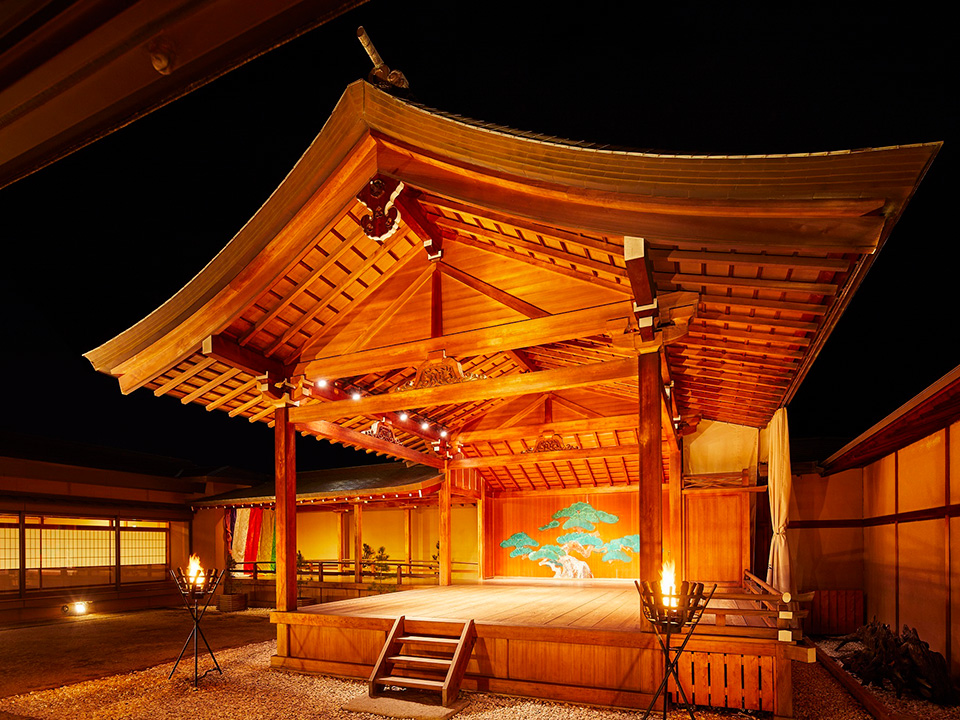
Noh is one of the oldest theater traditions in Japan and was popular in the city of Matsuyama during the Edo period (1603–1867). Noh plays often focus on the overlap between this world and the spirit world. The otherworldly atmosphere of many Noh performances is enhanced by the use of masks, which represent characters ranging from old men to young beauties to raging demons. Visitors to Dōgo Onsen can experience this otherworldliness for themselves at Ryokan Yamatoya Honten’s outdoor Noh stage, “Senjūden.”
Attending a Noh or Kyōgen performance at Senjūden is one of the best ways to appreciate how Noh was traditionally performed. Indoor Noh stages, such as those in Kyoto, Tokyo, and Osaka, are a modern invention. The sound of the drums, flutes, and chanters’ voices project differently in the open air. The white rocks around the perimeters of the main stage reflect sunlight to better illuminate the actors.
Senjūden is periodically open to the public, and the stage can be rented for special events, including weddings. Guests can try on Noh masks, stand, and walk around on the stage, and take photos freely.


